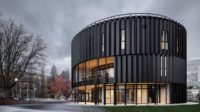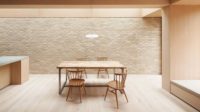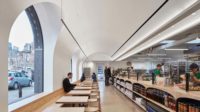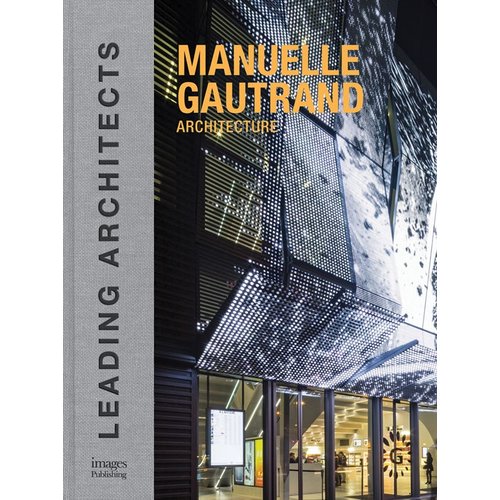As China’s economy shifts, the built environment is evolving to match a slower pace of life, and a growing middle class is searching for roots, serenity, and calm. Line+, a young Hangzhou-based studio, is among firms led by a younger generation of Chinese architects, looking to heritage and nature for inspiration—part of China’s cultural turn inward, toward reflection. According to Meng Fanhao, one of Line+’s founding partners, “Architecture is a way of thinking; design is a tool. We’re interested in the process of social change—in the countryside and urban settings at the same time.” Starting with the Dongziguan project in 2016, a revitalization of an old neighborhood in Hangzhou, and later works including the Tai’an Dongximen mountain village renewal, and Hangzhou’s Longyin temple extension, Line+ respects Chinese traditions of living together with nature. The studio’s designs can be very contemporary, but also always with a nod to the natural world.
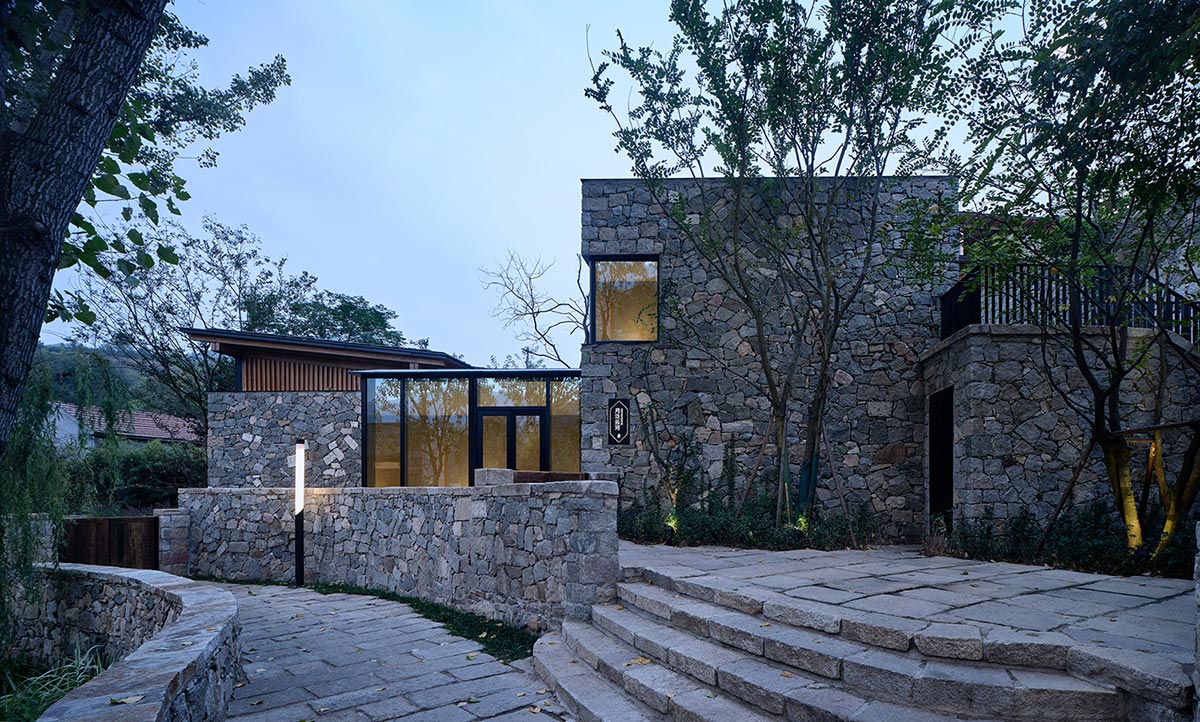
1
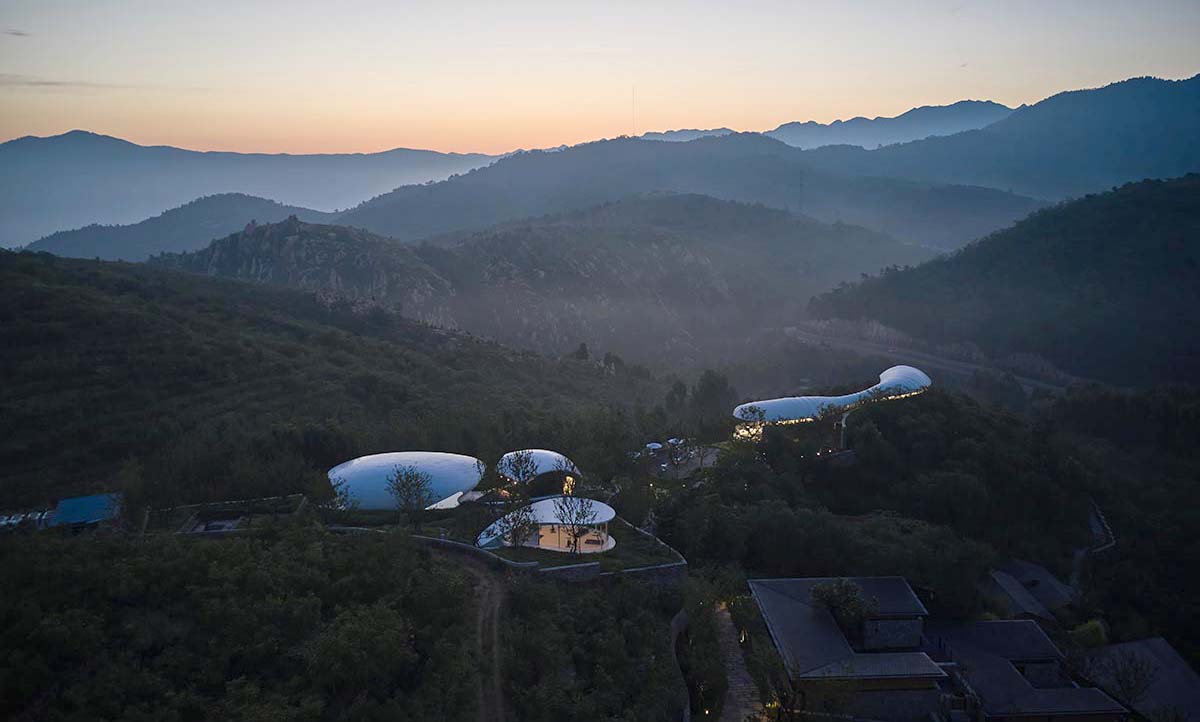
2
Tai’an Dongximen Village Renewal: While respecting the original village texture and mountain environment, and keeping the boundaries of the homestead unchanged, the design realizes the rebirth of the old village in what the architects call an “acupuncture-type restoration” (1). Compared with the orderly cottages, the Jiunvfeng Study and Leisure facilities higher up, on Mount Tai, have soft curves and a strikingly modern appearance (2). Photos © Zystudio, click to enlarge.
Meng, 42, and Zhu Peidong, 38, his partner, had both been working architects for nearly a decade, with Zhu going from “paper architect to practicing architect” on 2012’s Zhejiang Conservatory of Music while at another firm. “A violent clash exists between historically oriented architecture and highly market-driven societal necessities,” Zhu says, and his approach reflects the effort to strike a balance in China’s new urban skylines. Prior to cofounding Line+, Meng worked in a small design-oriented practice as well as at a big commercial firm, and saw the same trends, explaining that “the fast urbanization process has halted, and large-scale urban construction has been reduced.” The market forces that drove Chinese cityscapes to be thrown up overnight a decade ago today dictate preservation and renovation of existing structures. Chinese leaders now say they want quality GDP, not quantity; that’s reflected in the sorts of projects that Line+ excels at.
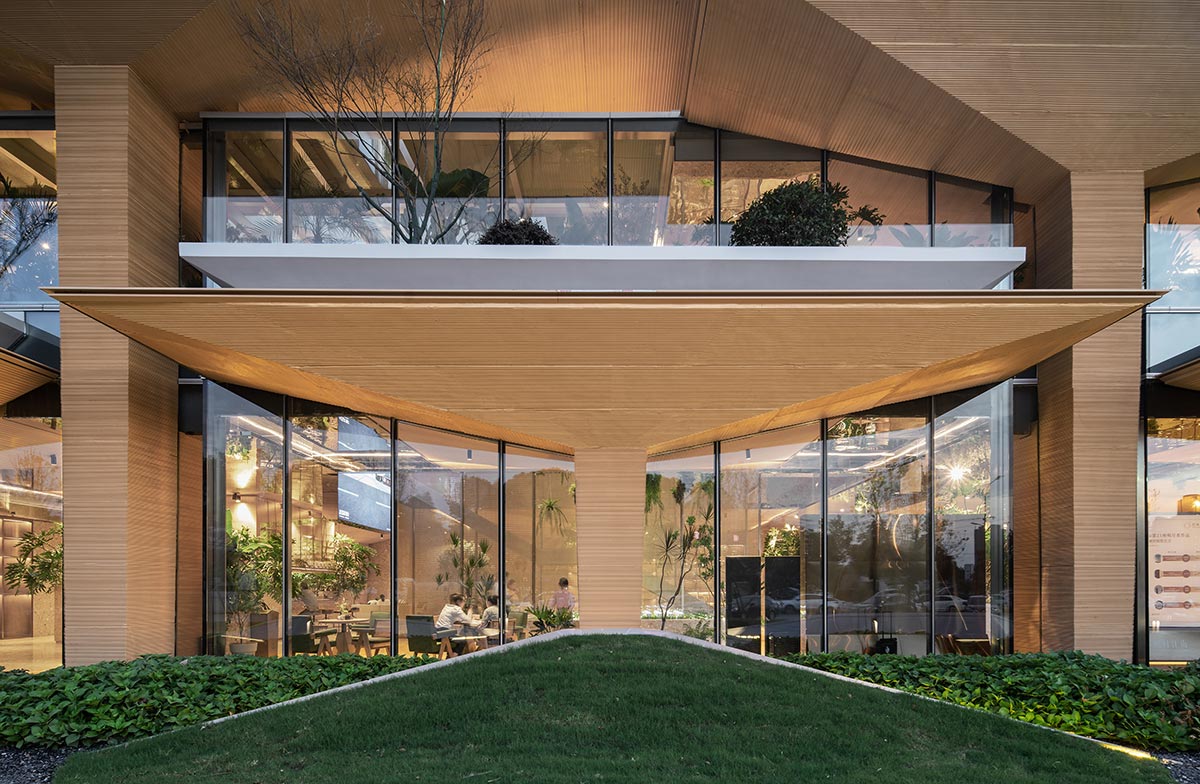
Slab Hill Lifestyle Lab: Located just over a mile from the Songya Lake National Wetland Park in Changsha, Hunan Province, the building is in dialogue with nature. Spa-like interiors are arranged on an artificial hill, created around an umbrella-shaped structural unit. Photo © Caai_image
“The lakes and natural environment create a humanistic setting in Hangzhou,” Meng says. Accretions of the history of humans in nature, and customs embedded in nature are everywhere you turn in Tai’an and the Jiangnan region where Line+ is based, but the studio isn’t limited to one part of the vast country, or one style. In Hangzhou, the Qiantang River Art Museum shows a more modern affinity, and in the northeastern city of Changchun—an industrial hub with a history of Japanese modernism—Line+ created a private mansion on Lotus Mountain, with spaces for Buddhist worship and contemplation of nature. In southwestern Yunnan, the team’s Dongfengyun Art Center blends into the surrounding landscape, reflecting the ancient Chinese imperative that man and nature should live as one. Rural revitalization is a government priority (and, in the Chinese countryside, local government is the biggest client), but the pursuit of a calmer way of life is widely shared. From its years of rapid growth, China is maturing into a softer, gentler relationship to nature and its own history; Line+ is leading the way.
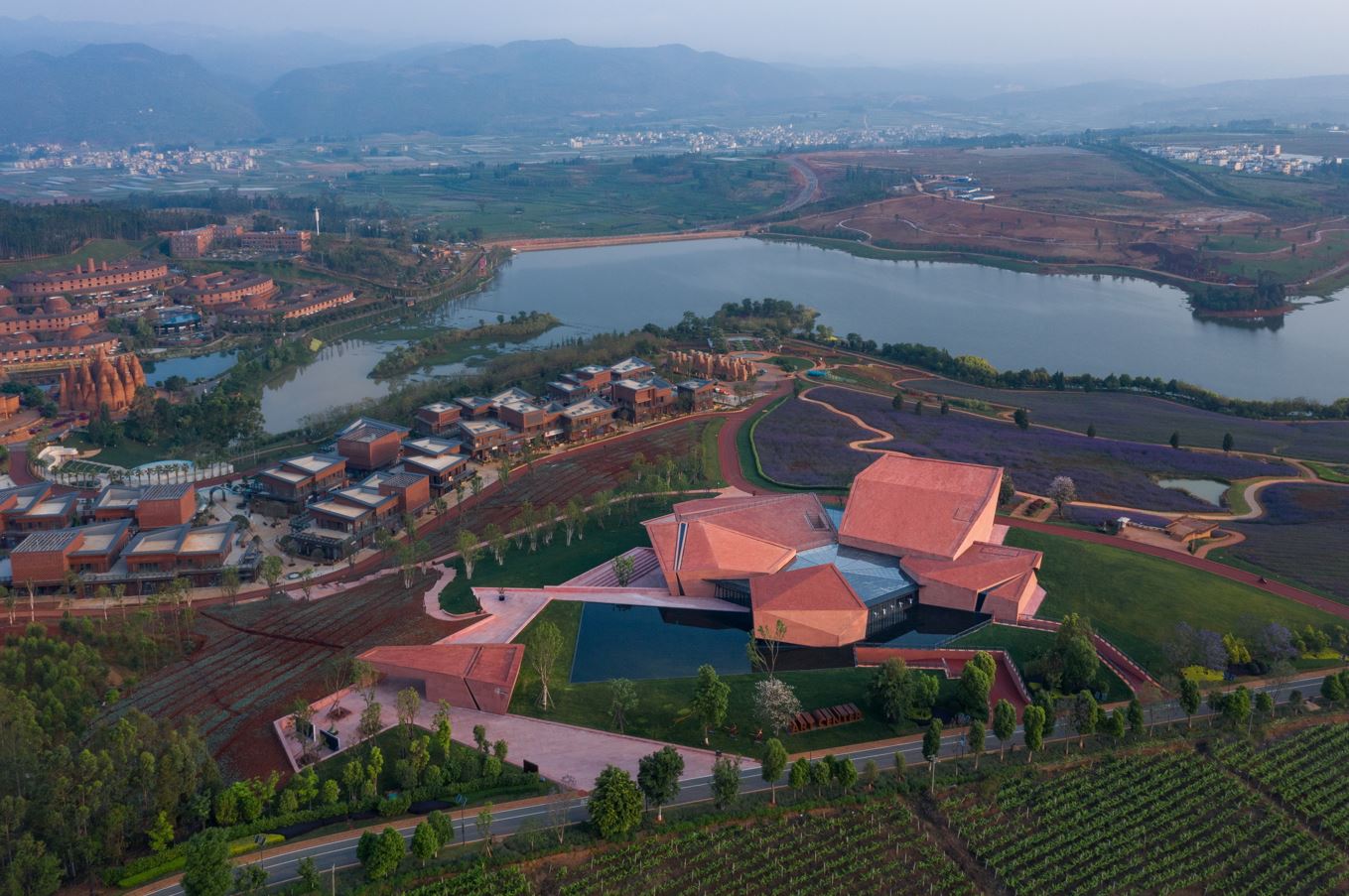
Yunnan Dongfengyun Art Center. Photo © Wang Ce
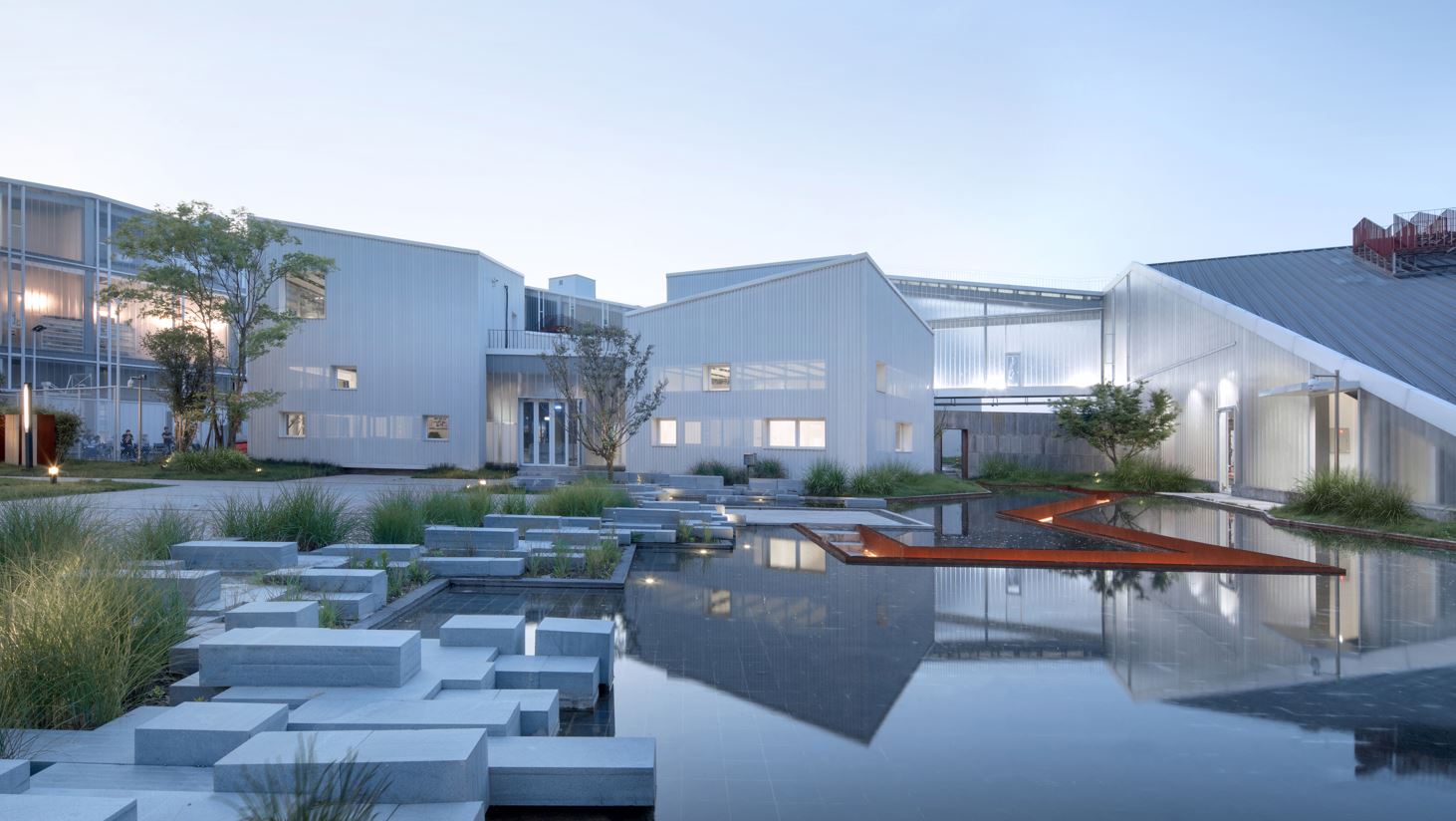
3
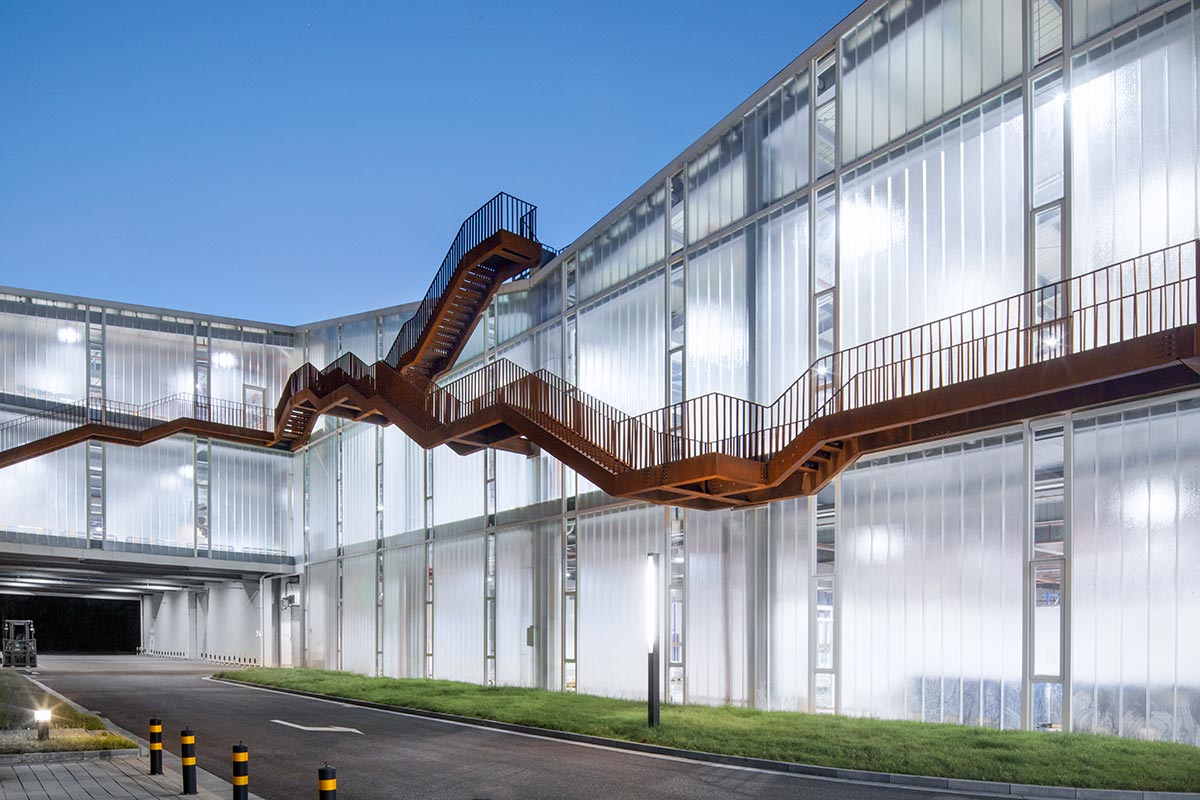
4
Zhejiang Perfect Production Factory: With this project, completed in 2019, Line+ rethought traditional industrial sites by integrating the landscape with new courtyards and gardens around the theme of “mountain and water,” and transforming “monotonous cubic architectures” (3 & 4). Photos © Arch-Exist photography

Meng Fanhao and Zhu Peidong. Photo courtesy Line+
FOUNDED:
2018
DESIGN STAFF:
114
PRINCIPALS:
Meng Fanhao, Zhu Peidong
EDUCATION:
Meng: Nanjing University, M. Arch., 2006
Zhu: Tongji University, D.Eng., 2016; Zhejiang University, M. Arch., 2009; Zhejiang University, B.Arch., 2006
WORK HISTORY:
Meng: gad, 2012–17; AZL Architects, 2009–12; Zhejiang Greenton Architecture Design, 2006–09
Zhu: GLA, 2012–18; Coo-hho Architects, the Architectural Design and Research Institute of Zhejiang University, 2009–12
KEY COMPLETED PROJECTS:
Yunnan Dongfengyun Art Center, 2021; Teahouse in Jiuxing Village, 2020, Hangzhou; Tai’an Dongximen Village Renewal Project, 2020 (all in China)
KEY CURRENT PROJECTS:
Suzhou Pingjiang H266 Cultural Expo Park; Lishui Guyanhuaxaing Art Center (both in China); FOREST Community, San Francisco; Universal Studios Los Angeles Hilton Hotel expansion


